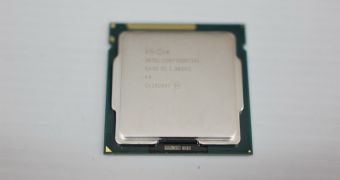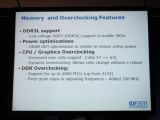At the Intel Developer Forum, which takes place right now in San Francisco, California, the Santa Clara chip giant has released some new information regarding the overclocking features supported by its next-generation Ivy Bridge CPU architecture.
These improve upon the overclocking specs of Sandy Bridge and add support for higher multipliers, dynamic overclocking, which allows ratio change without requiring a reboot, as well as support for higher DDR3 frequencies.
According to a slide published by the AnandTech website, Intel will raise the maximum multiplier from 57x, in the current Sandy Bridge chips, to 63x, while the maximum official memory frequency supported will be set at 2800MHz. Overclockers will also have the ability to adjust the DDR3 speed in finer steps.
All these changes are expected to improve the overclocking potential of Ivy Bridge, although the higher multiplier support won't come into effect unless extreme cooling solutions, such as LN2, are being used.
Ivy Bridge is the code name used for the 22nm die shrink of the current Sandy Bridge chips and basically features the same architecture, but with a few minor tweaks and improvements.
As a result, the chips also inherit Sandy Bridge's inability to raise the BCLK as they come with a built-in clock generator that doesn't allow consumers to raise this frequency by more than 10MHz.
This basically means that overclockers have to rely on raising the multiplier in order to achieve high overclocks, but support for unlocked multipliers is only available in a limited series of CPUs from the K-series.
Besides improved overclocking, other key features that made their way into Intel's 22nm Ivy Bridge chips include DirectX 11 support, better AVX performance, an integrated PCI Express 3.0 controller as well as native USB 3.0 support thanks to the Panther Point chipsets.
These first Ivy Bridge processors are expected to debut in April/May 2012 and will rapidly take the place of the current Sandy Bridge CPUs.

 14 DAY TRIAL //
14 DAY TRIAL // 
